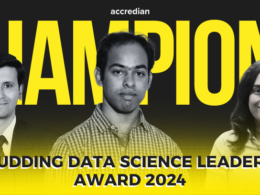A Data Scientist at Airbnb is someone who is well versed in handling and processing huge data banks and interpreting them to the business functions. The roles of a Data Scientist are categorised into 3 tiers, they are analytics, inference, and algorithms.
Airbnb thrives by letting the public know about their Data Science and Machine Learning teams who guide their products in the marketplace.
The responsibilities of a Data Scientist at Airbnb are:
- Organising data and creating ETL pipelines.
- Analysing, processing, and visualising the data into useful information.
- Applying Data Science in practical ways to move the needle.
How many rounds are there in the Airbnb interview?
The interview for a Data Scientist role is divided into 3 rounds at Airbnb that begins with a phone interview, followed by a take-home-challenge and lastly an onsite interview and presentation.
Airbnb Interview rounds
Round- 1 Phone interview
The first round of the interview is a phone call screen with the recruiter. After going through your resume the recruiter is likely to ask about your professional background and see how qualified you are in terms of their company’s requirements.
Questions can range from ‘Where do you see yourself in the next 5 years?’, ‘Tell me more about your past projects’ etc. If the recruiter is from a technical background, they might end up asking simple but relevant questions about the field.
Pro Tip: Make sure you ask questions to the recruiter as well to clear all your doubts and queries about the company or the job role.
Round- 2 Take-home challenge
The second round is the Data Science challenge. Airbnb will send you a Data Science take-home challenge. They will ask you to work on it and send it back in a day or two. For an analytics role, the take-home challenge is a Data Analysis one. Given a dataset, analyse it and create a powerpoint presentation.
For the Data Scientist Algorithms role, candidates are given a challenge to solve by 3 hours. This round majorly tests your insights from the given data and how you build a simple predictive model with applicable reasoning.
Pro Tip: Do brush up on your coding and SQL skills as doing so will help you complete the take-home task on time. Also revision of your work is a must.
Round- 3 On-site Interview and Presentation
The last round is the on-site interview with another data challenge. The candidate meets the Airbnb data team and is shown the bare basics of what it is like to work at Airbnb as a Data Scientist.
Following which, a task is given to the candidate with an open ended analysis type question. It is up to the candidate to sort out the data, come up with a strategy and explain to the team how the strategy will help.
The time limit given for this challenge is around 7 hours. At the end, you will be called upon to present your work to a panel of Airbnb department wise experts.
Candidates who make it through this round are now scheduled for another set of interviews. There are a total of 5 interviews where 2 are technical with white board coding, 2 are product based with the last one focusing on behaviour.
Pro Tip: Anticipate the interviewer’s concerns and reservations. Make sure you defend their points with logic and confidence.
20 questions that you must practice for a Data Scientist role interview
Here are a list of questions that will help you practice for the interview:
EASY
- What is logistic regression?
- What is Ensemble Learning?
- List out the libraries in Python used for Data Analysis and Scientific Computations.
- Name various types of Deep Learning Frameworks
- What is the K-means clustering method?
- What is Lasso Regression ?
INTERMEDIATE
- Discuss the Decision Tree algorithm.
- What is Back Propagation?
- Design a recommender system for Airbnb listings.
- We saw a dip in page views yesterday. How would you investigate what happened?
- How would you measure the effectiveness of our operations team?
- What is the aim of conducting A/B Testing?
- What is Prior probability and likelihood?
- List the differences between supervised and unsupervised learning.
- What is the difference between “long” and “wide” format data?
- What is regularisation? Why is it useful?
 Pin
PinHARD
- Given two tables, one containing user profile and interests, and another containing houses to be recommended, along with topic tags and metadata such as amenities, price, reviews, location, country, topic, etc.. Create a recommendation engine using this data.
- Can you cite some examples where a false negative important than a false positive?
- How can you generate a random number between 1 – 7 with only a die?
- Explain Auto-Encoder.
We hope you enjoyed reading and learnt more about the interview process. Please check out more such blogs here.







